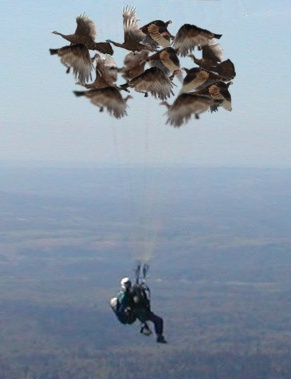[…] As games grow bigger in scope, writers are facing the ratcheting challenge of keeping NPCs individually interesting and realistic. How do you keep each interaction with them – especially if there are hundreds of them – distinct? This is where Ghostwriter, an in-house AI tool created by Ubisoft’s R&D department, La Forge, comes in.
Ghostwriter isn’t replacing the video game writer, but instead, alleviating one of the video game writer’s most laborious tasks: writing barks. Ghostwriter effectively generates first drafts of barks – phrases or sounds made by NPCs during a triggered event – which gives scriptwriters more time to polish the narrative elsewhere. Ben Swanson, R&D Scientist at La Forge Montreal, is the creator of Ghostwriter, and remembers the early seeds of it ahead of his presentation of the tech at GDC this year.
[…]
Ghostwriter is the result of conversations with narrative designers who revealed a challenge, one that Ben identified could be solved with an AI tool. Crowd chatter and barks are central features of player immersion in games – NPCs speaking to each other, enemy dialogue during combat, or an exchange triggered when entering an area all provide a more realistic world experience and make the player feel like the game around them exists outside of their actions. However, both require time and creative effort from scriptwriters that could be spent on other core plot items. Ghostwriter frees up that time, but still allows the scriptwriters a degree of creative control.
“Rather than writing first draft versions themselves, Ghostwriter lets scriptwriters select and polish the samples generated,” Ben explains. This way, the tech is a tool used by the teams to support them in their creative journey, with every interaction and feedback originating from the members who use it.
As a summary of its process, scriptwriters first create a character and a type of interaction or utterance they would like to generate. Ghostwriter then proposes a select number of variations which the scriptwriter can then choose and edit freely to fit their needs. This process uses pairwise comparison as a method of evaluation and improvement. This means that, for each variation generated, Ghostwriter provides two choices which will be compared and chosen by the scriptwriter. Once one is selected, the tool learns from the preferred choice and, after thousands of selections made by humans, it becomes more effective and accurate.
[…]
The team’s ambition is to give this AI power to narrative designers, who will be able to eventually create their own AI system themselves, tailored to their own design needs. To do this, they created a user-friendly back-end tool website called Ernestine, which allows anyone to create their own machine learning models used in Ghostwriter. Their hope is that teams consider Ghostwriter before they start their narrative process and create their models with a vision in mind, effectively making the tech an integral part of the production pipeline.
[…]
Source: The Convergence of AI and Creativity: Introducing Ghostwriter
This looks like another excellent way of employing generative AI in a way that eases the life of people doing shitty jobs.

